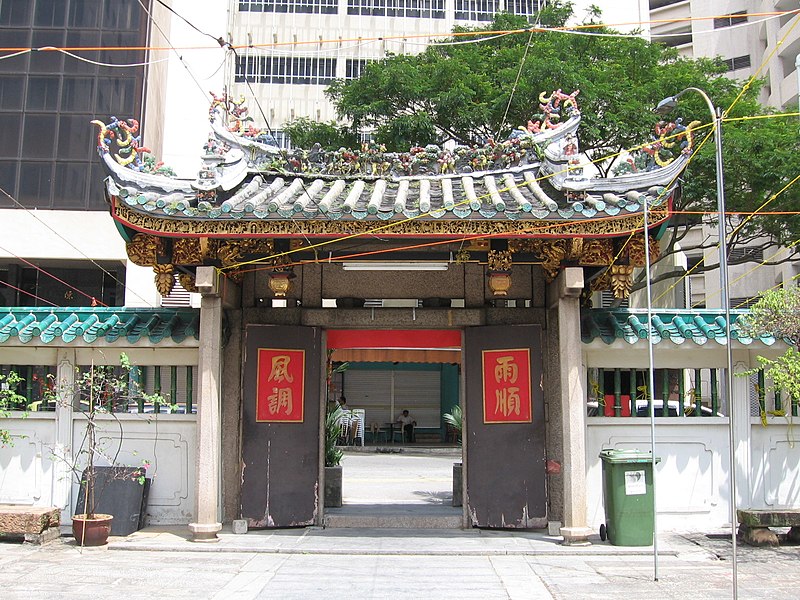Yueh Hai Ching Temple

Facts and practical information
Nestled in the bustling heart of Singapore's Central Business District, Yueh Hai Ching Temple, also affectionately known as the "Temple of Love", is a historical gem that stands as a testament to the cultural and religious heritage of Chinese immigrants in Singapore. This exquisite place of worship, recognized as a UNESCO heritage site, dates back to the early 19th century, making it one of the oldest Teochew temples in the city-state.
The Yueh Hai Ching Temple, whose name translates to "Temple of the Calm Seas", was built by Chinese seafarers who sought divine protection for their perilous maritime journeys. Over the years, it has evolved from a simple shrine to an elaborate edifice adorned with intricate roof ridges, detailed carvings, and ornate sculptures. The temple's architecture is a splendid showcase of traditional southern Chinese design, with elements that reflect the skill and artistry of craftsmen from that era.
The temple is dedicated to the worship of the Taoist gods of the winds and the waters, which were particularly significant to the seafaring community. As such, it served not only as a spiritual haven but also as a social hub for Chinese immigrants who gathered there to seek solace and camaraderie in a foreign land.
In modern times, Yueh Hai Ching Temple continues to draw both worshippers and curious visitors alike. Couples, in particular, flock to the temple in search of blessings for their relationships, giving the temple its moniker as the "Temple of Love". Its historical significance and architectural beauty have earned it a place among Singapore's national monuments, ensuring its preservation for future generations.
Yueh Hai Ching Temple – popular in the area (distance from the attraction)
Nearby attractions include: Cavenagh Bridge, Asian Civilisations Museum, One Raffles Place, Yue Hwa.
















